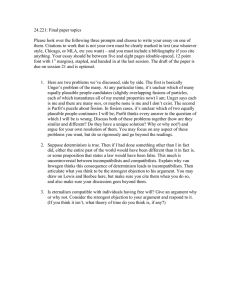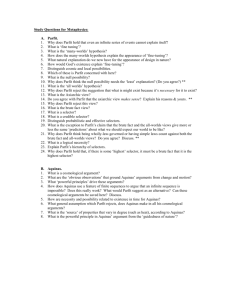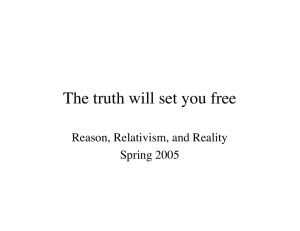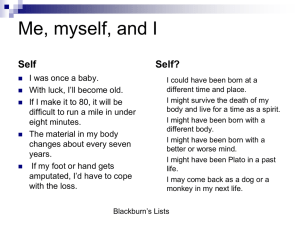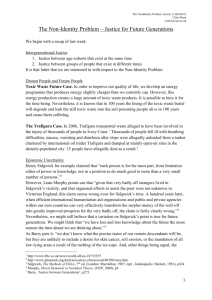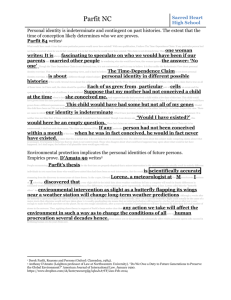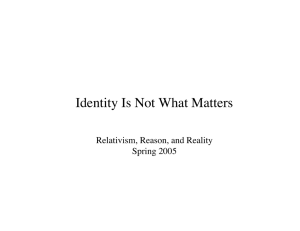Parfit's Bundle Theory: Personal Identity & Consciousness
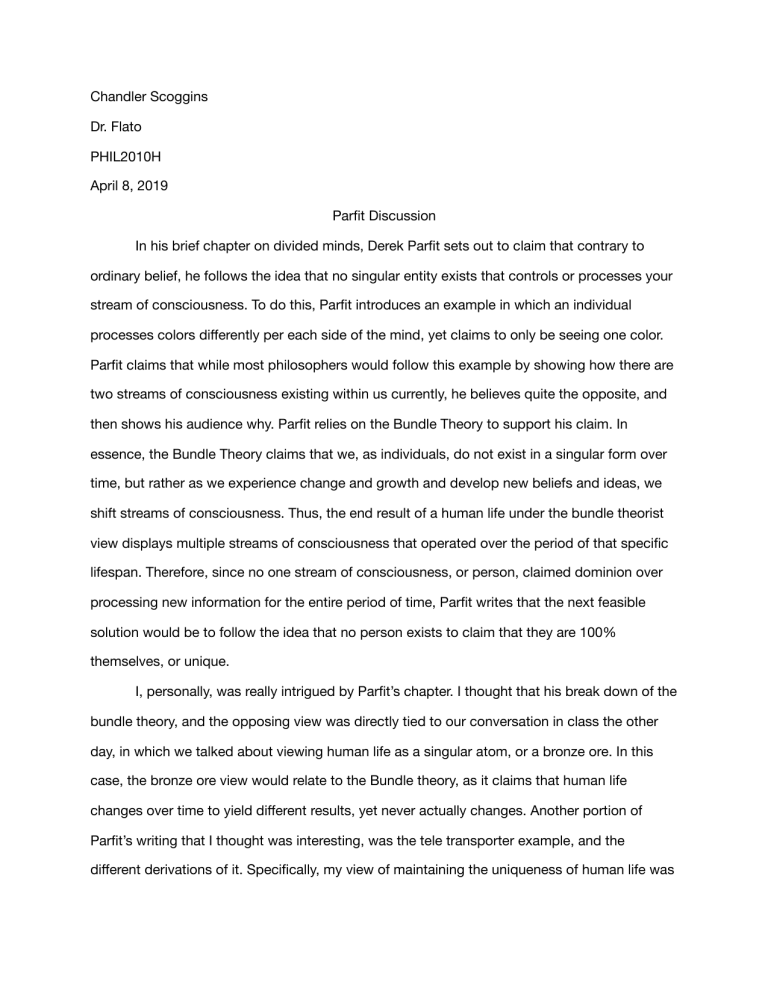
Chandler Scoggins
Dr. Flato
PHIL2010H
April 8, 2019
Parfit Discussion
In his brief chapter on divided minds, Derek Parfit sets out to claim that contrary to ordinary belief, he follows the idea that no singular entity exists that controls or processes your stream of consciousness. To do this, Parfit introduces an example in which an individual processes colors di ff erently per each side of the mind, yet claims to only be seeing one color.
Parfit claims that while most philosophers would follow this example by showing how there are two streams of consciousness existing within us currently, he believes quite the opposite, and then shows his audience why. Parfit relies on the Bundle Theory to support his claim. In essence, the Bundle Theory claims that we, as individuals, do not exist in a singular form over time, but rather as we experience change and growth and develop new beliefs and ideas, we shift streams of consciousness. Thus, the end result of a human life under the bundle theorist view displays multiple streams of consciousness that operated over the period of that specific lifespan. Therefore, since no one stream of consciousness, or person, claimed dominion over processing new information for the entire period of time, Parfit writes that the next feasible solution would be to follow the idea that no person exists to claim that they are 100% themselves, or unique.
I, personally, was really intrigued by Parfit’s chapter. I thought that his break down of the bundle theory, and the opposing view was directly tied to our conversation in class the other day, in which we talked about viewing human life as a singular atom, or a bronze ore. In this case, the bronze ore view would relate to the Bundle theory, as it claims that human life changes over time to yield di ff erent results, yet never actually changes. Another portion of
Parfit’s writing that I thought was interesting, was the tele transporter example, and the di ff erent derivations of it. Specifically, my view of maintaining the uniqueness of human life was
challenged by the di ff erent yields of such an experience, as I questioned whether a copy of me that was 99% the same was any di ff erent or not.
